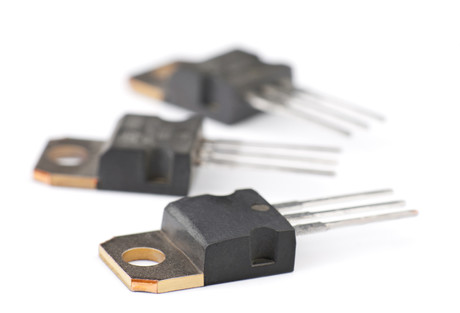Fujitsu triples the output power of GaN transistors

Fujitsu and Fujitsu Laboratories have developed a crystal structure that increases both current and voltage in gallium-nitride (GaN) high-electron-mobility transistors (HEMT), effectively tripling the output power of transistors used for transmitters in the microwave band.
Announced at the International Symposium on Growth of III-Nitrides (ISGN-7) in early August, the GaN HEMT technology can serve as a power amplifier for equipment such as weather radar. By applying the developed technology to this area, it is expected that the observation range of the radar will be expanded by 2.3 times, enabling early detection of cumulonimbus clouds that can develop into torrential rainstorms.
In recent years, GaN HEMTs have been widely used as high-frequency power amplifiers in long-distance radio wave applications, such as radars and wireless communications. It is also expected that they will be used for weather radars to observe localised torrential rainfall, as well as in millimetre-waveband wireless communications for fifth-generation mobile communications (5G).
To expand the observation range of equipment like radar, it is essential to increase the output power of the transistors used in power amplifiers — which requires both high current and high voltage operation. Research is ongoing for indium-aluminium-gallium nitride (InAlGaN) HEMTs for the next-generation GaN HEMT that would contribute to increased current, as InAlGaN HEMTs can increase electron density within the transistor. When high voltage is applied, however, an excessive amount of voltage becomes concentrated on a part of the electron supply layer, damaging the crystals within transistors. Consequently, these transistors had a serious issue whereby their operating voltage could not be increased.
Fujitsu Laboratories has been conducting research on GaN HEMTs since the early 2000s, and currently provides the aluminium-gallium nitride (AlGaN) HEMTs used in a variety of areas. The company has recently been looking into InAlGaN HEMTs, which enable high-current operation as high-density electrons become available. The company set out to develop a crystal structure that achieves both high current and high voltage simultaneously, partnering with Fujitsu to insert a high-resistance AlGaN spacer layer between the structure’s electron supply layer and the electron channel layer.
For conventional InAlGaN HEMTs, all of the applied voltage between the gate and drain electrodes was applied to the electron supply layer, and numerous electrons with high kinetic energy were generated in the electron supply layer. Subsequently, these electrons would violently strike the atoms which compose the crystal structure, causing damage. As a result of this phenomenon, there was a limit to the maximum operating voltage of the transistor.
By inserting the high-resistant AlGaN spacer layer, the voltage within the transistor can be dispersed across both the electron supply layer and the AlGaN spacer layer. By mitigating the concentration of voltage, the kinetic energy increase of the electrons within the crystal is suppressed and damage to the electron supply layer can be prevented, leading to an improved operating voltage of up to 100 V. This operation voltage corresponds to over 300,000 V if the distance between the source electrode and gate electrode is 1 cm.
The companies thus achieved both high current and high voltage operation, which was conventionally difficult to achieve. Furthermore, by applying the single-crystal diamond substrate bonding technology Fujitsu developed in 2017, the heat generation within the transistor can be efficiently dissipated through diamond substrate, enabling stable operations. When GaN HEMTs with this crystal structure were measured in actual tests, they achieved what is claimed to be the world’s highest output power of 19.9 W/mm of gate width, which is three times higher than the output power of conventional AlGaN/GaN HEMTs.
The companies will conduct an evaluation of the heat resistance and output performance of GaN HEMT power amplifiers using this technology, with the goal of commercialising high output power, high-frequency GaN HEMT power amplifiers for use in applications such as radar systems and 5G wireless communication systems by fiscal 2020.
Organic transistor 'limitation' improves stability
Researchers have shown that a longstanding organic transistor design limitation actually improves...
OLED circular polarisation is now electrically switchable
Researchers have discovered a way to control left- or right-handed polarised light via charge...
Nanoscale pixels to advance augmented reality eyewear
Physicists have developed extremely small pixels that can be used in compact AR glasses, using...




